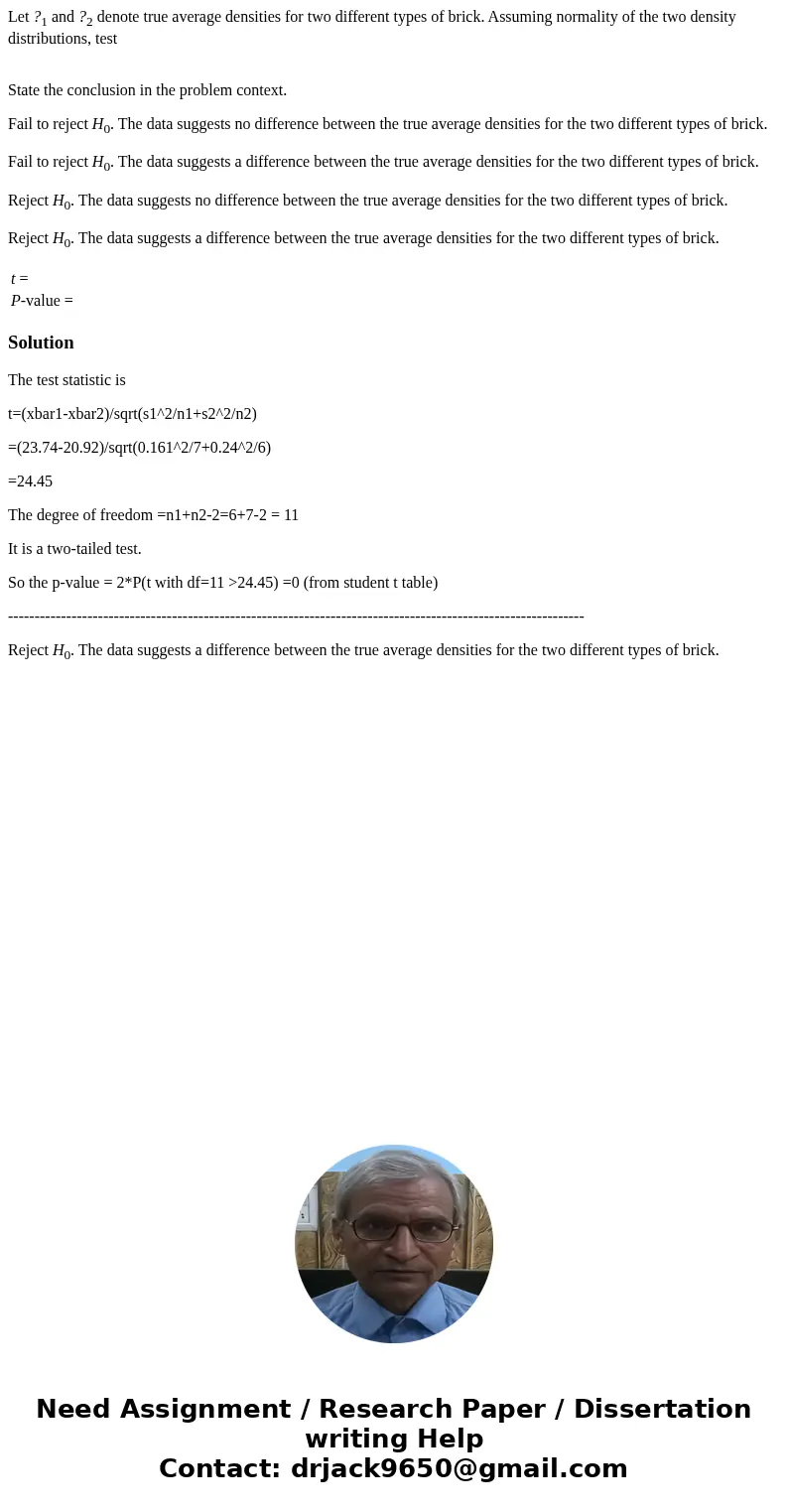Let 1 and 2 denote true average densities for two different
Let ?1 and ?2 denote true average densities for two different types of brick. Assuming normality of the two density distributions, test
State the conclusion in the problem context.
Fail to reject H0. The data suggests no difference between the true average densities for the two different types of brick.
Fail to reject H0. The data suggests a difference between the true average densities for the two different types of brick.
Reject H0. The data suggests no difference between the true average densities for the two different types of brick.
Reject H0. The data suggests a difference between the true average densities for the two different types of brick.
| t = | |
| P-value = |
Solution
The test statistic is
t=(xbar1-xbar2)/sqrt(s1^2/n1+s2^2/n2)
=(23.74-20.92)/sqrt(0.161^2/7+0.24^2/6)
=24.45
The degree of freedom =n1+n2-2=6+7-2 = 11
It is a two-tailed test.
So the p-value = 2*P(t with df=11 >24.45) =0 (from student t table)
-------------------------------------------------------------------------------------------------------------
Reject H0. The data suggests a difference between the true average densities for the two different types of brick.

 Homework Sourse
Homework Sourse